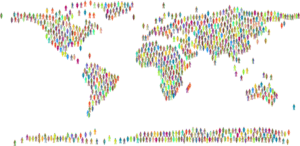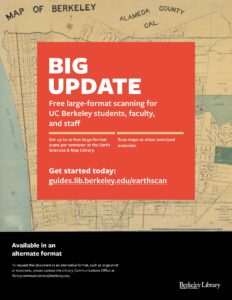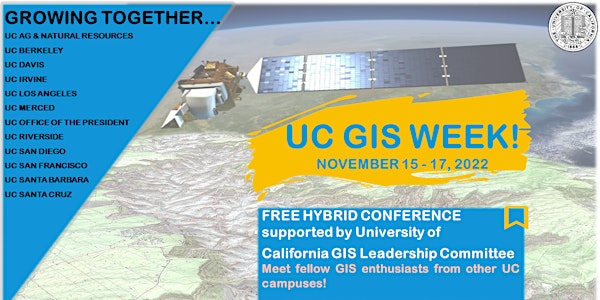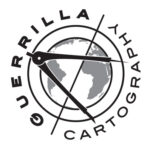Join us for the next campus GIS & Mapping Community of Practice meetup on October 17 from 2-3 pm! This month’s meetup will take place virtually on Zoom. Register to receive the link.
 This informal meetup offers participants an opportunity to get to know other people using mapping tools and techniques across campus, regardless of discipline. Whether you’re just getting started exploring GIS & Mapping or a seasoned pro (or anywhere in between!), all are welcome to participate in the GIS & Mapping Community of Practice. Bring your questions and get excited to meet fellow mappers!
This informal meetup offers participants an opportunity to get to know other people using mapping tools and techniques across campus, regardless of discipline. Whether you’re just getting started exploring GIS & Mapping or a seasoned pro (or anywhere in between!), all are welcome to participate in the GIS & Mapping Community of Practice. Bring your questions and get excited to meet fellow mappers!
Let us know if you’re interested in sharing this month (or at a future meetup) during our community “show and tell,” and also what topics you’re interested in learning about, by completing the GIS & Mapping Community of Practice Interest Form.
 Members of the UC Berkeley community can now get up to 10 free large-format scans per semester at the Earth Sciences & Map Library! This can include maps or other large, flat materials. Scans over the free allotment are $10 each. For walk-in patrons not affiliated with the university, the cost is $25 per scan. Get more information about large-format scanning, or visit the library to start your scanning project.
Members of the UC Berkeley community can now get up to 10 free large-format scans per semester at the Earth Sciences & Map Library! This can include maps or other large, flat materials. Scans over the free allotment are $10 each. For walk-in patrons not affiliated with the university, the cost is $25 per scan. Get more information about large-format scanning, or visit the library to start your scanning project. Members of the UC Berkeley community can now get up to 10 free large-format scans per semester at the Earth Sciences & Map Library! This can include maps or other large, flat materials. Scans over the free allotment are $10 each. For walk-in patrons not affiliated with the university, the cost is $25 per scan. Get more information about large-format scanning, or visit the library to start your scanning project.
Members of the UC Berkeley community can now get up to 10 free large-format scans per semester at the Earth Sciences & Map Library! This can include maps or other large, flat materials. Scans over the free allotment are $10 each. For walk-in patrons not affiliated with the university, the cost is $25 per scan. Get more information about large-format scanning, or visit the library to start your scanning project.
 Susan also serves on the board of Guerrilla Cartography, which publishes crowd-sourced atlases. The group’s latest project, “
Susan also serves on the board of Guerrilla Cartography, which publishes crowd-sourced atlases. The group’s latest project, “ This informal meetup offers participants an opportunity to get to know other people using mapping tools and techniques across campus, regardless of discipline. Whether you’re just getting started exploring GIS & Mapping or a seasoned pro (or anywhere in between!), all are welcome to participate in the GIS & Mapping Community of Practice. Bring your questions and get excited to meet fellow mappers!
This informal meetup offers participants an opportunity to get to know other people using mapping tools and techniques across campus, regardless of discipline. Whether you’re just getting started exploring GIS & Mapping or a seasoned pro (or anywhere in between!), all are welcome to participate in the GIS & Mapping Community of Practice. Bring your questions and get excited to meet fellow mappers!